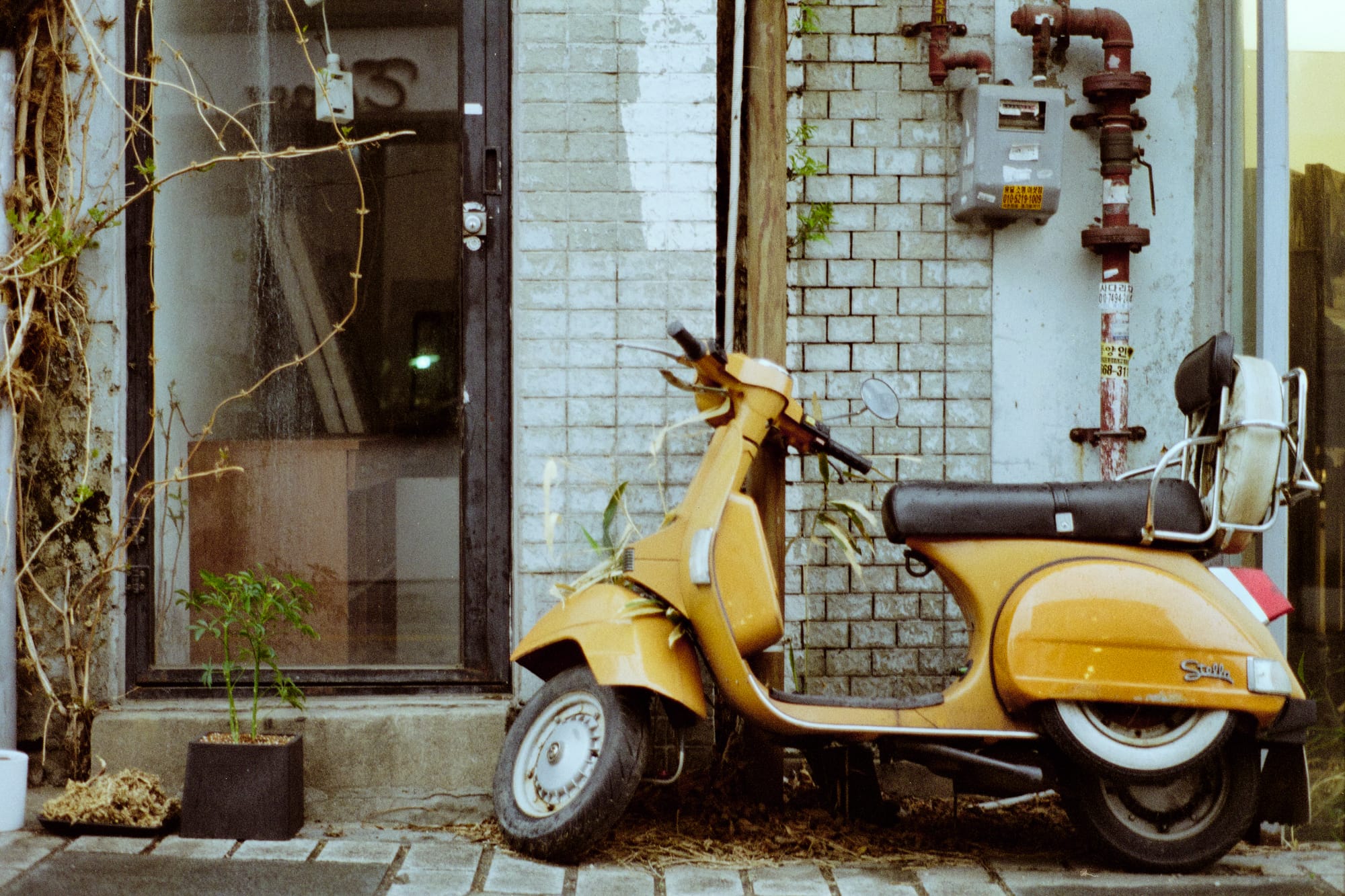On Authenticity
A lot of ink has been spilt on the idea that analog photos are somehow more authentic than AI-generated photos. I think authenticity is bullshit, and I have the negatives to prove it.
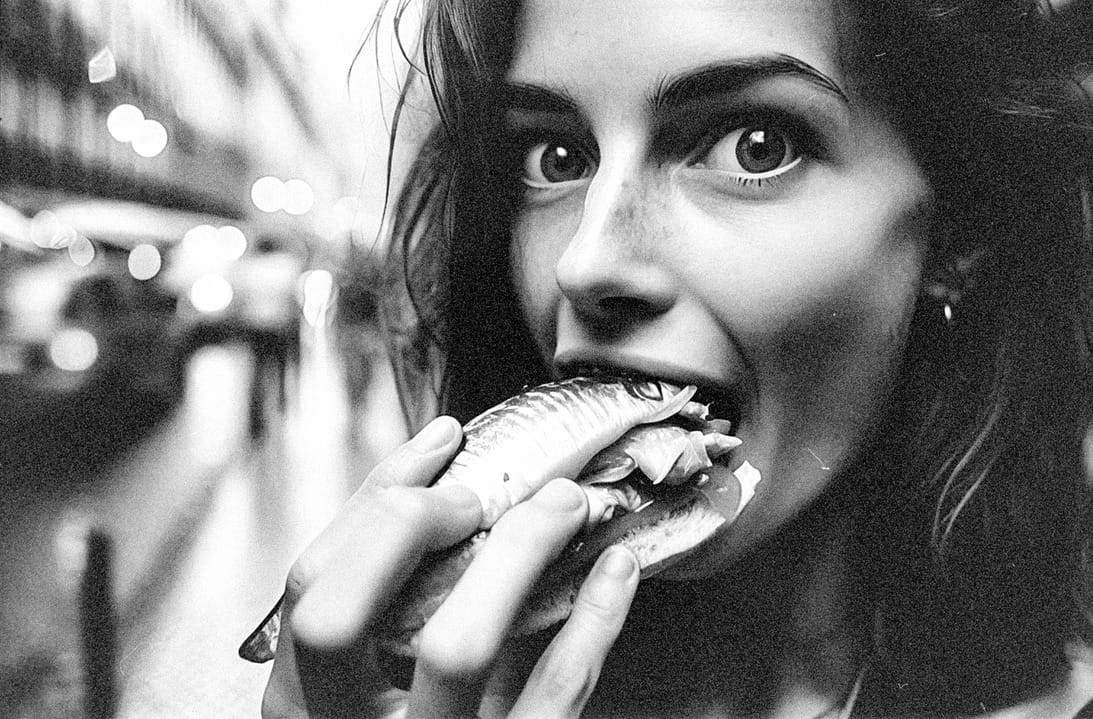
Authenticity is a subject that has been very important to me for a range of reasons over my career. Previous jobs have all required some degree of authenticity on my part, but have left what that means ill-defined, something for my intuition to work out. To be honest, it’s been a struggle.
I’ll never forget a conversation I had with a friend of mine about ten years ago. I hadn’t yet made the jump to digital, and my friend—a designer—was showing me his new Fujifilm X100T. I made the thoughtless claim that film was more authentic, because it had a look that couldn’t be matched by digital images. His response was to show me the Fujifilm film simulations (because of course that’s how this conversation plays out). And in that moment I began to doubt some of my closely-held assumptions about what authenticity even was.
Fast forward ten years. Buried in the comments of a recent article on Harmon’s very large and very welcome investment in its manufacturing capacity, I ran across this:
It warms my heart that as AI and AI based editing procedures gain traction and dilute photographic integrity that film is making such a resurgence for people who want to maintain a modicum om authenticity. [sic]
This comment surprised me. Not only because I still don’t know what makes a photograph authentic, but also because from the very beginning, photography has always struggled with (perfectly legitimate) complaints that its claims to authenticity were undermined by the ease with which photos can be manipulated, indeed must be manipulated to produce an image. I wonder why should we think that analog film is somehow inherently authentic? But it turns out variations on this commenter’s opinion are widely shared.
So, let’s turn to some recent essays penned on the topic, and see if we can glean what The Internet thinks authentic photographs are. And then let’s deconstruct that definition because what else did you think we were going to do here?
Three Essays
Last year, Simon King wrote on PetaPixel about the nature of film’s authenticity that…
A film negative will always exist alongside the images from the same roll, inescapable from what came before and what occurred after. The physical nature of film means it can be examined in person, and an “independent” print can be produced from it.…and [the film] can be compared against any print or scan to see what manipulation has occurred.
What makes film authentic is a combination of it existing as a physical object, and indeed in conjunction with other physical objects that are presumably conceptually connected. (Simon clearly doesn’t shoot large format…) As well, the idea that film is very difficult to manipulate (though it is far from impossible, as the Pictorialists knew well). But on the other hand…
A digital file is removed from context as soon as it is shown in isolation, separated from sequence and source.…A digital image has no such method for verification.
Digital files are less authentic because they are neither physical nor are they embedded in a suitable context. And presumably (Simon is not very clear on this point), AI-generated images, being individual digital files, are less authentic for precisely this same reason. Nor can we see an indelible historical trail of manipulation.
A couple of weeks ago, Kim Simpson made a similar argument on Fstoppers.
Given the rise in AI’s association with photography and the ease with which photos can be altered, it might be worth considering a return to the use of traditional film as a means to regain trust and ensure the integrity of photography.
So, right from the beginning, we have a clear statement that film is more authentic than either digital photos (because they can be easily manipulated) or AI-generated imagery (because reasons).
Film negatives serve as physical evidence of the captured moment, providing a connection to the truth which we can hold in our hands and see for ourselves. This transparency and tangibility offers confidence in the authenticity of the photograph, as it is difficult to dispute the reality of an image that exists, as captured, as a physical object.
Again, we have the idea that the nature of film’s authenticity lies in its physicality. Physical objects are more authentic than digital objects. And this is so because it is more difficult to alter physical objects than it is to alter (or produce out of whole cloth) digital objects.
One last take. Joseph Tan wrote a few months ago on 35mmc that…
People crave realness, authenticity and tactility in artworks, not one that only possesses a brain but with heart and soul. We want to feel the presence of the artist through the artwork. We desire artworks that serve a purpose, not just to illustrate an idea but to create a sense of awe that increases knowledge.
Photography stands unique amongst artistic mediums as one which uses reality as its paint. These captured happenings, regardless of authenticity, must have existed somewhere at some point in time.…an authentic photo forces the audience to confront reality.
This is a slightly different claim. Joseph takes that the authenticity of physical objects lies in their history, their temporal connection to past events and their causal connection to the person who created them. Presumably digital artifacts lack this property.
The “Received View”
From the quotes I’ve pulled above, we can synthesize several claims about authenticity in photography.
- There is a spectrum of authenticity, ranging from nearly perfectly authentic analog film, to digital photography coming in at less authentic, heavily manipulated images even less, digital composites essentially inauthentic, and AI-generated images as having absolutely no authenticity whatsoever.
- The authenticity of film photography stems from the physical nature of it—the images exist in a physical medium that we can see and touch. Digital images are less authentic (or even totally inauthentic) because they do not have that tactile nature.
- The importance of the tactility of film might stem from several possible sources: The causal and temporal connections physical objects hold to their creation that digital artifacts lack; the increased difficulty of modifying a physical image versus a digital image; or the relationship the film image holds to other physical objects with the same provenance—they hang together in an interesting way that digital artifacts cannot.
Making monsters
There is an undeniable allure to these claims. Prima facie, this feels like a solid approach to establishing not only that film photos are authentic, but that they are more authentic than AI-generated images.
So, let’s make some monsters.
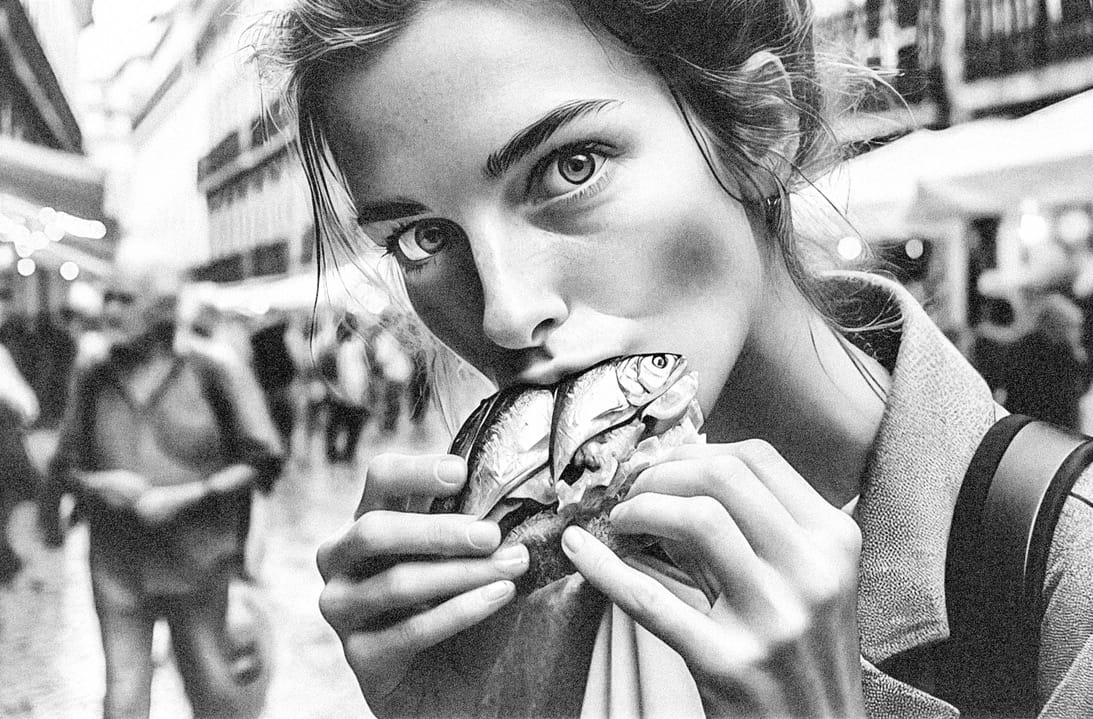
This image was captured on a Canon P with a Canon 50mm f/1.4 (the “Japanese Summilux”), a camera and lens from 1959 and about the peak of hipster analog fetishism. It was captured onto Ilford Delta 3200 film shot at box speed. It is thus an image created by transmitting light through glass and projecting the resulting image (in the physics sense of the term) onto an extremely-not-digital gelatin-suspended–silver-halide–crystal-matrix. It is also (as you will see) part of a series of images captured around the same time and place. It has all the hallmarks above of the most authentic kind of photograph—physicality, proximity to related objects, a causal connection to a creator, the ability to make a print to verify the lack of manipulation, all that.

Isn’t that the argument?
And yet, this image was obviously generated by AI. Indeed, I generated a whole series of images using Bing (on the theme of Santos Populares in Lisboa—one of my favorite things about living in Portugal). I then projected the AI-generated images onto a 4k television, and then pointed my not-a-Leica at the television to snap them onto film. Here is the original, which I have further enhanced using a different AI to make it bigger:

So clearly the film image above is totally inauthentic, because it began as an AI-generated digital image, right? Just to solidify the pro-authenticity argument, this image is part of a series taken at about the same time and place. Here are more from the series. Notice the sequential frame numbers (except no. 22 which I excerpted above). There are more, too. About half a roll’s worth.

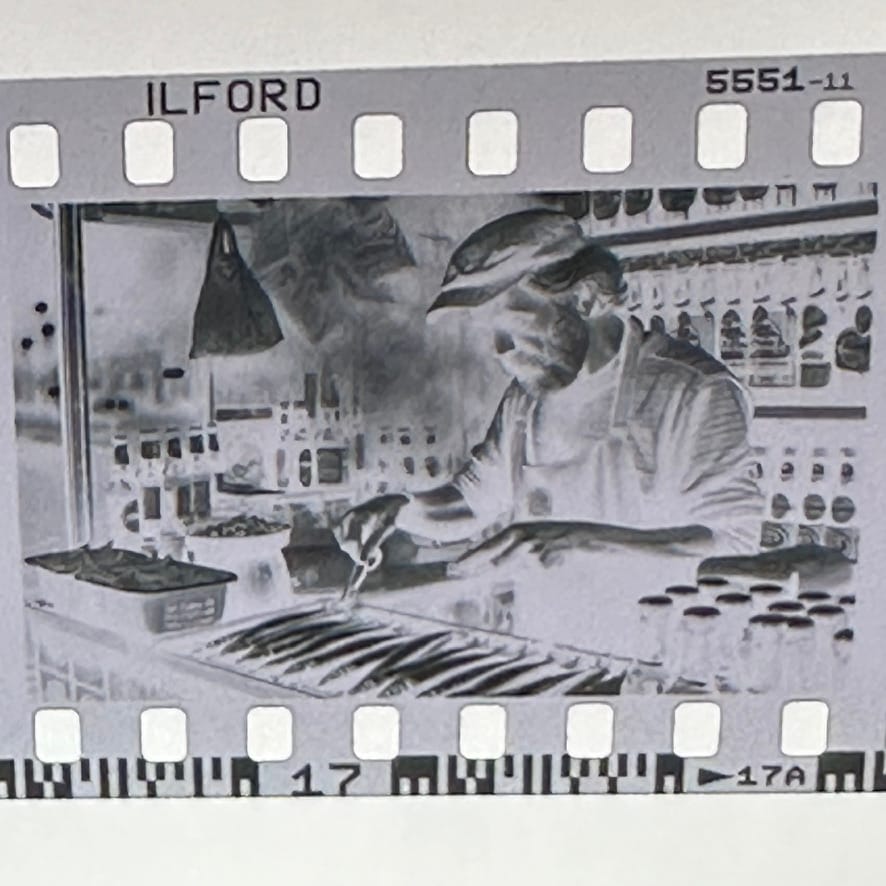
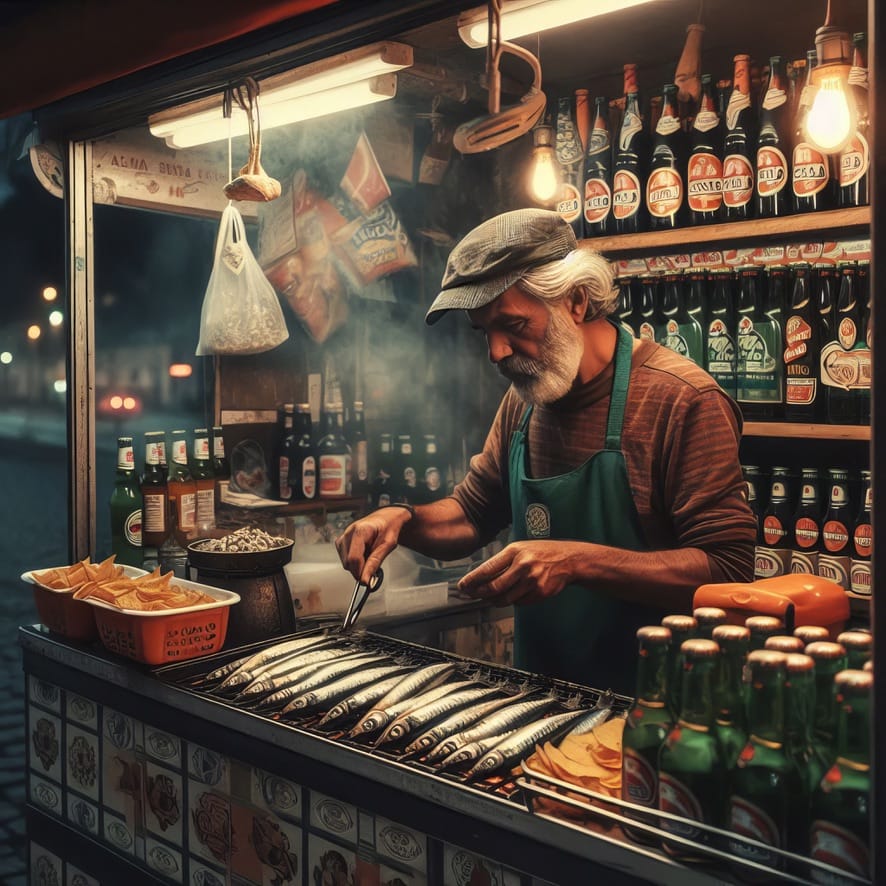
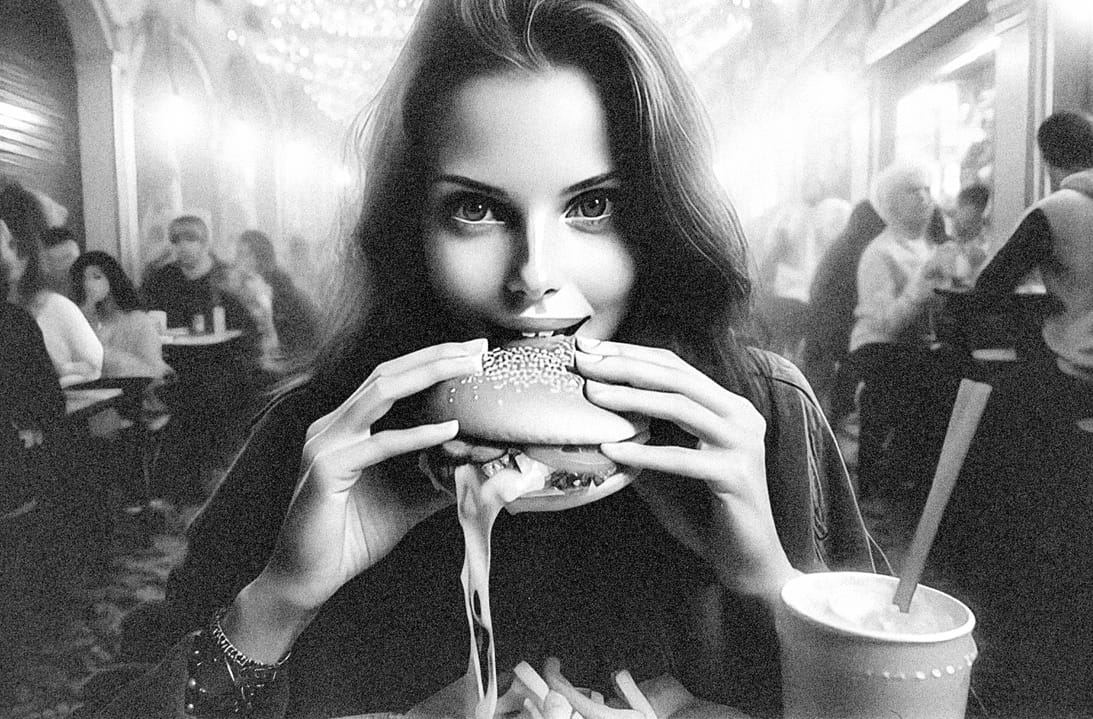
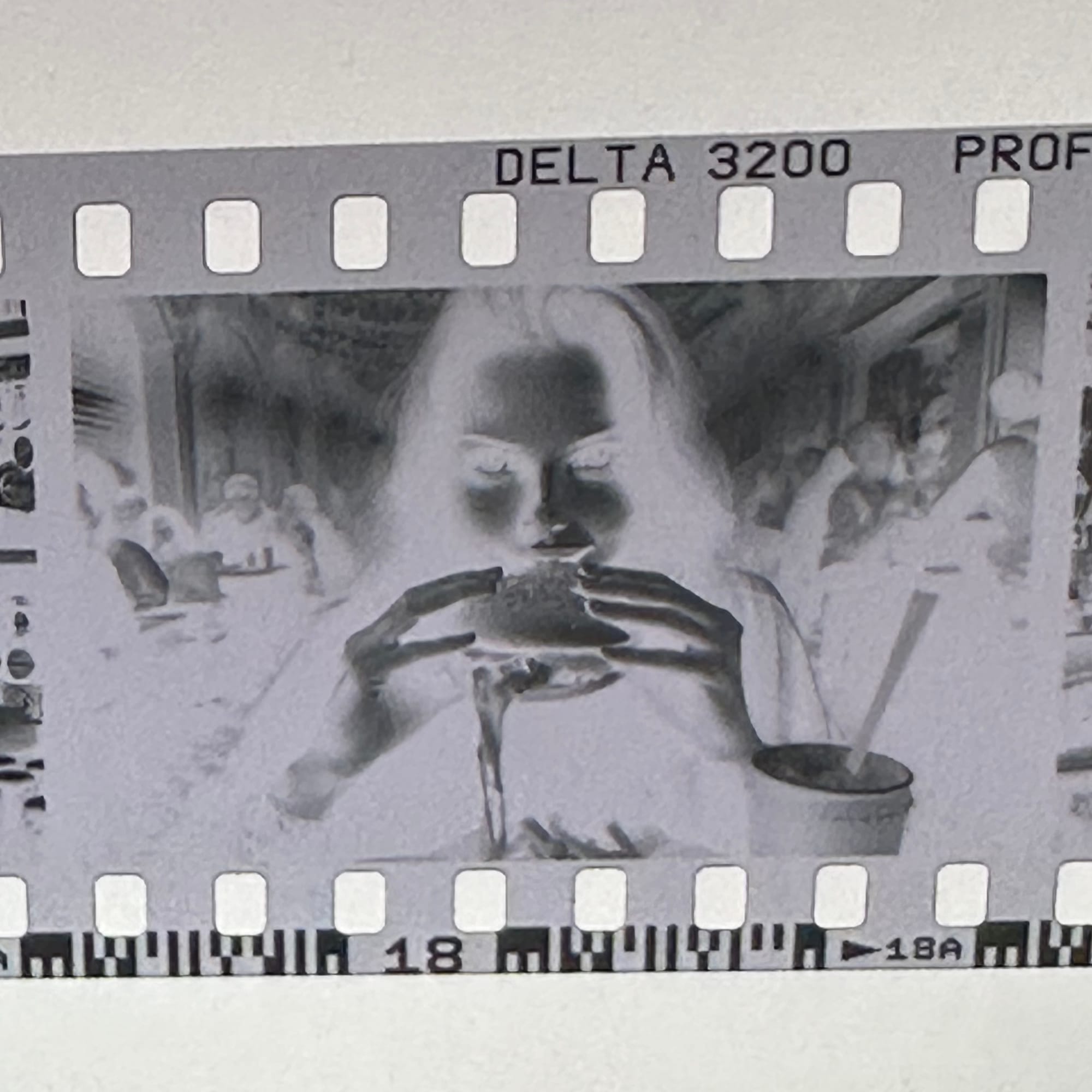
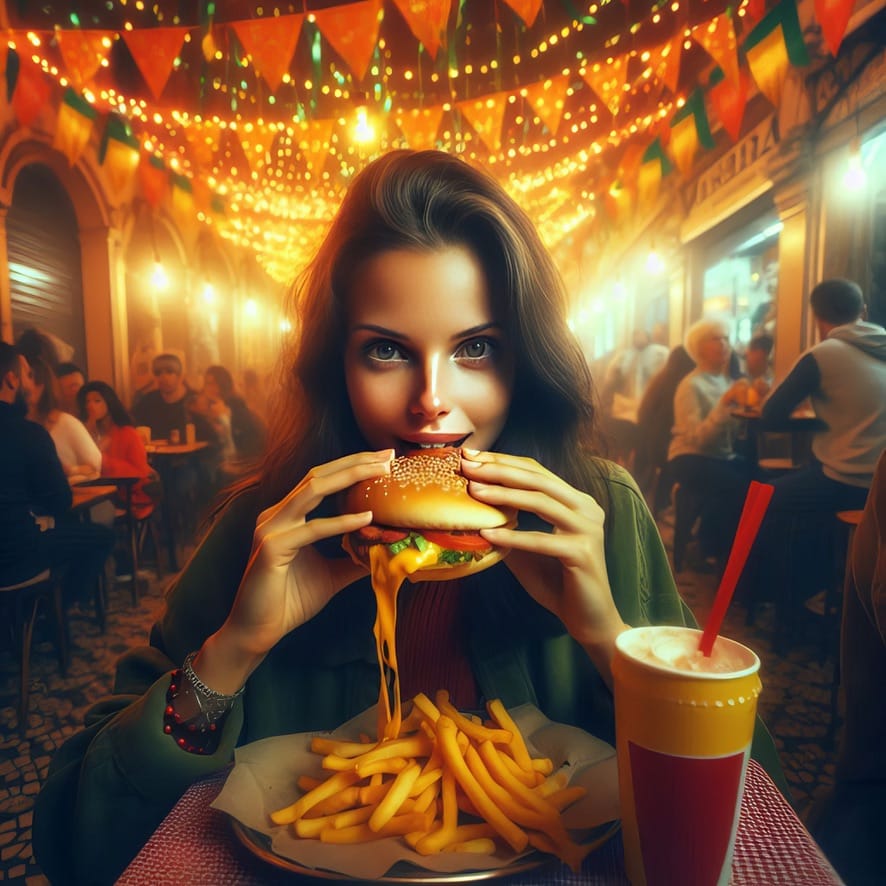
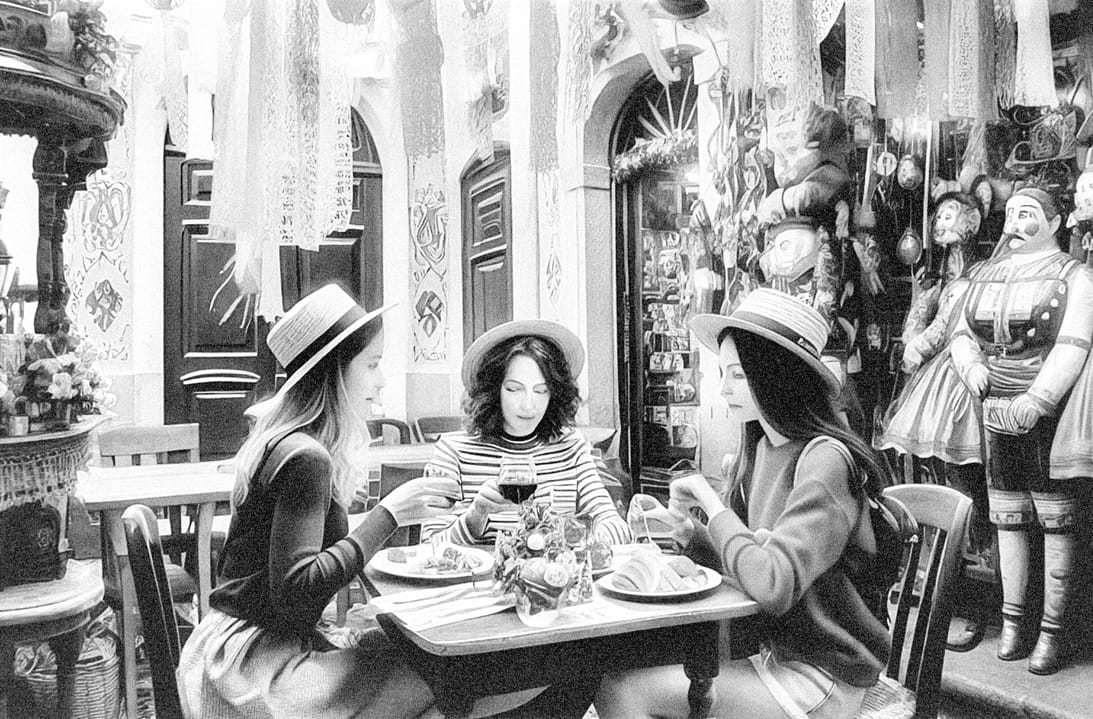

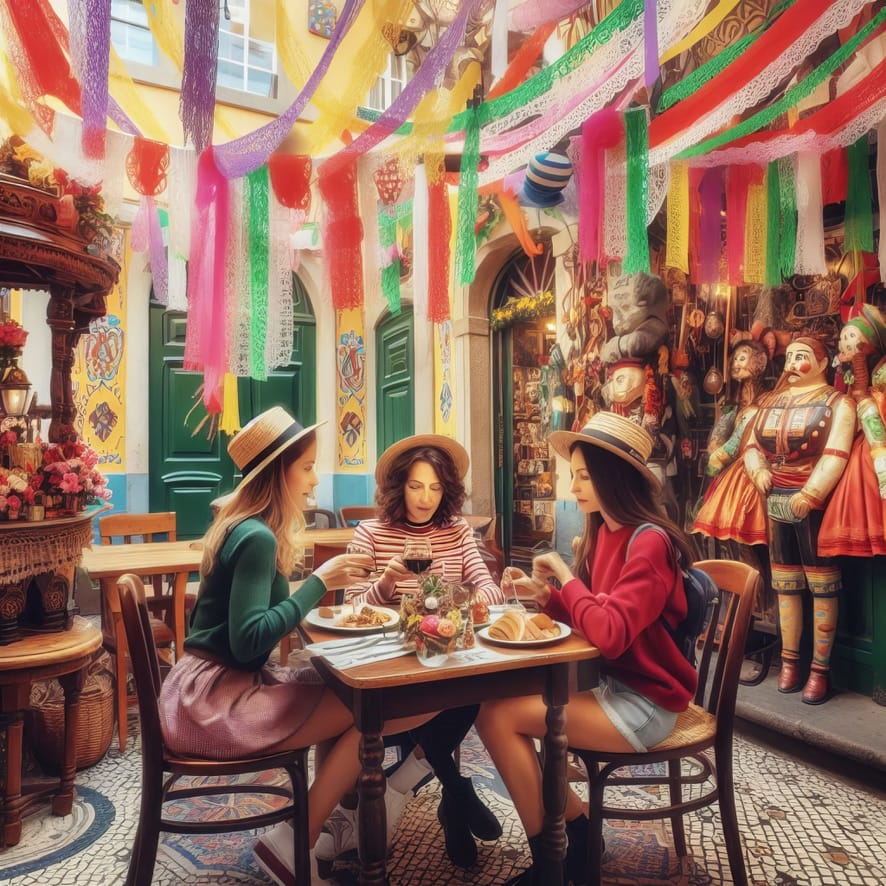
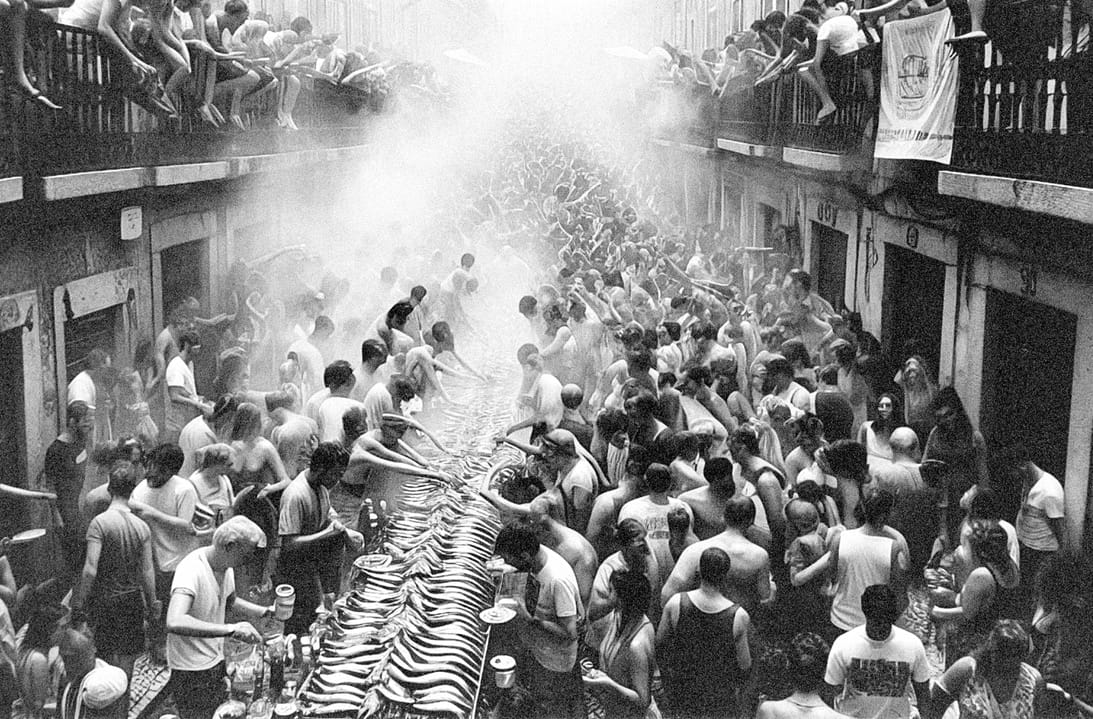
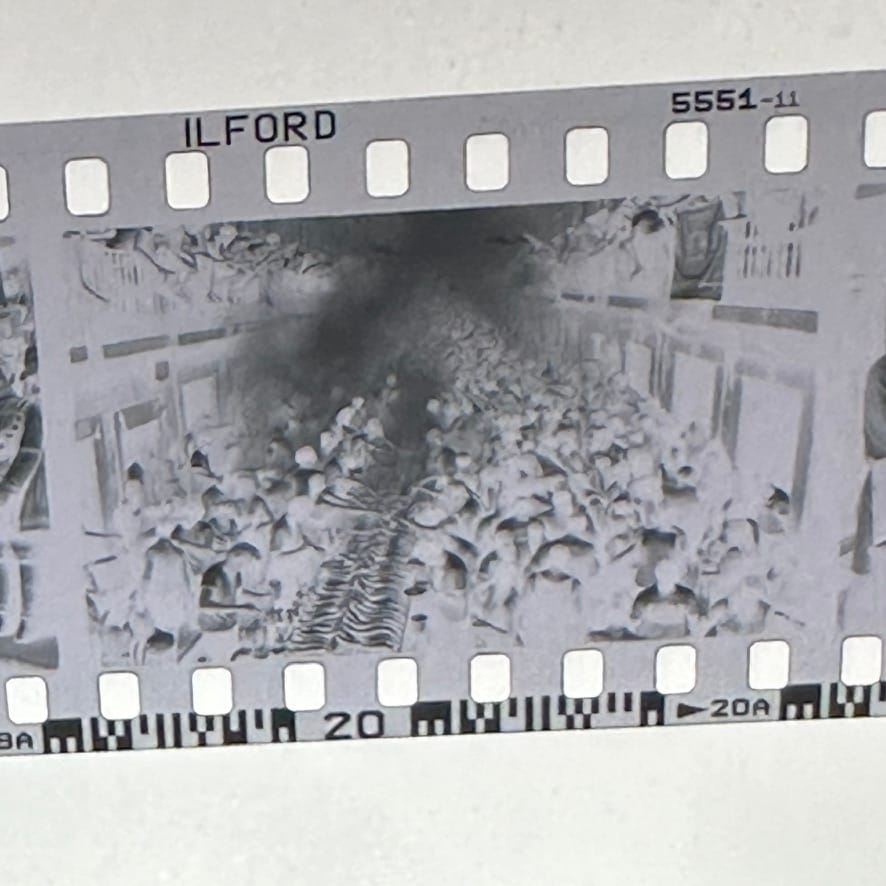
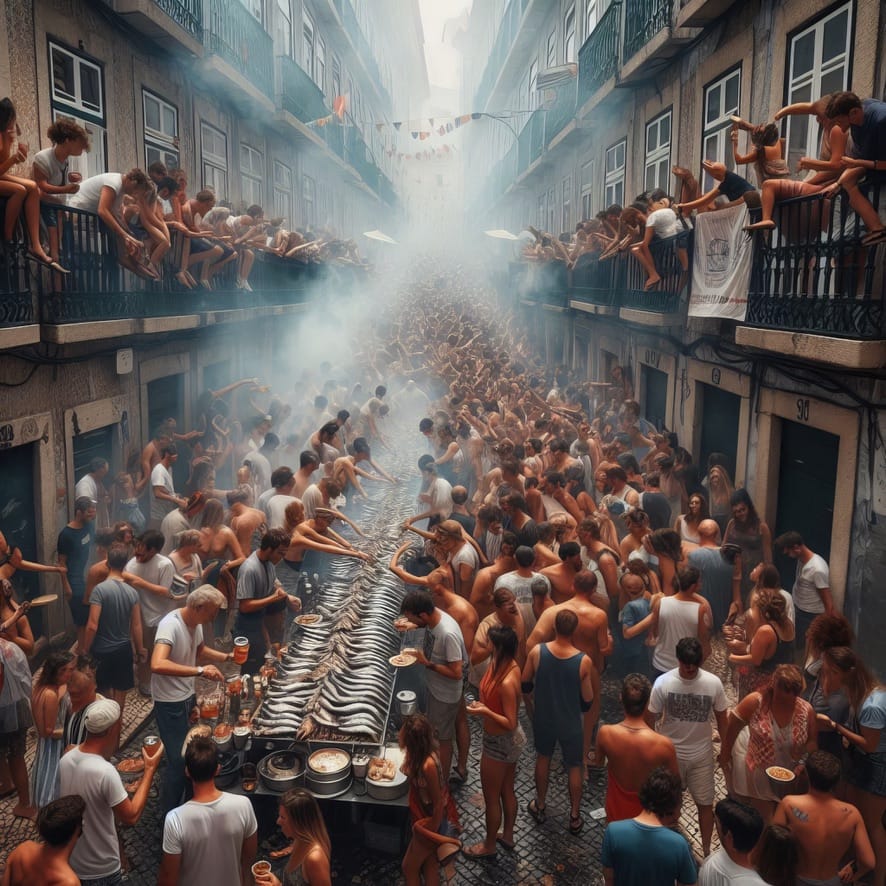
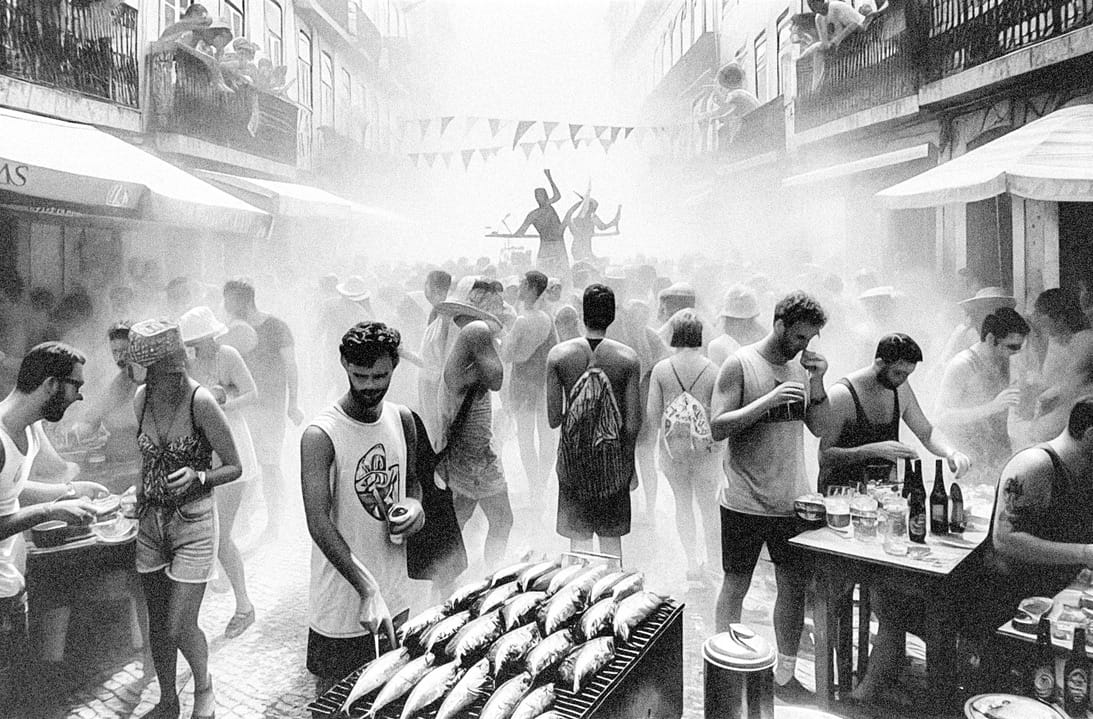
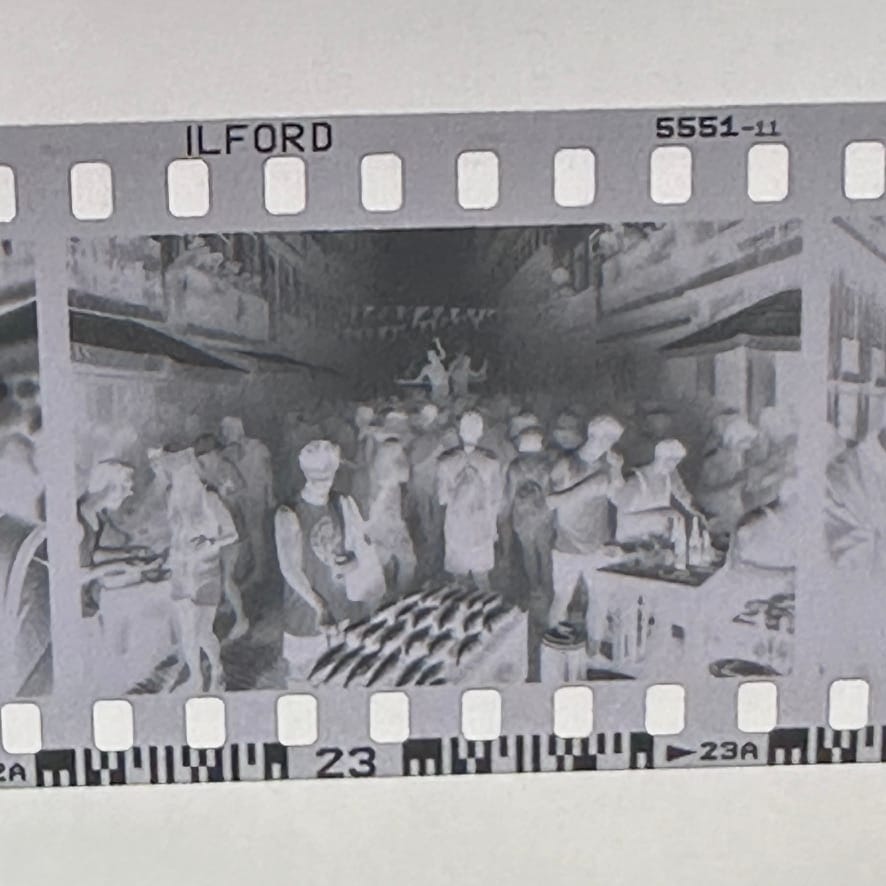

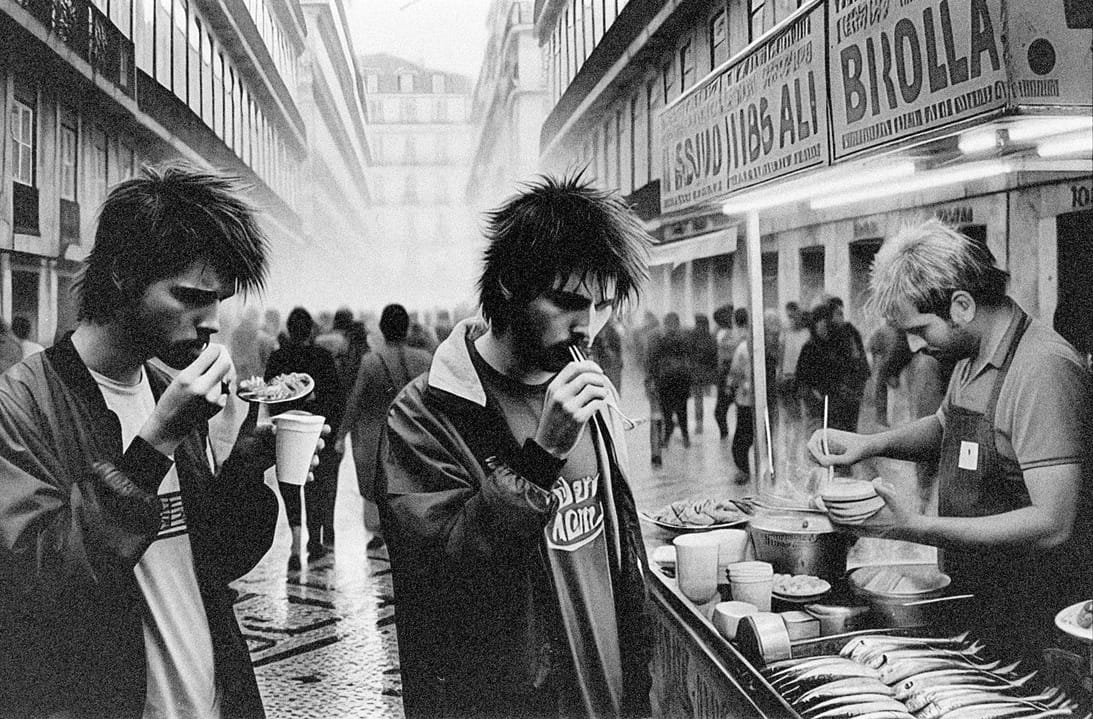
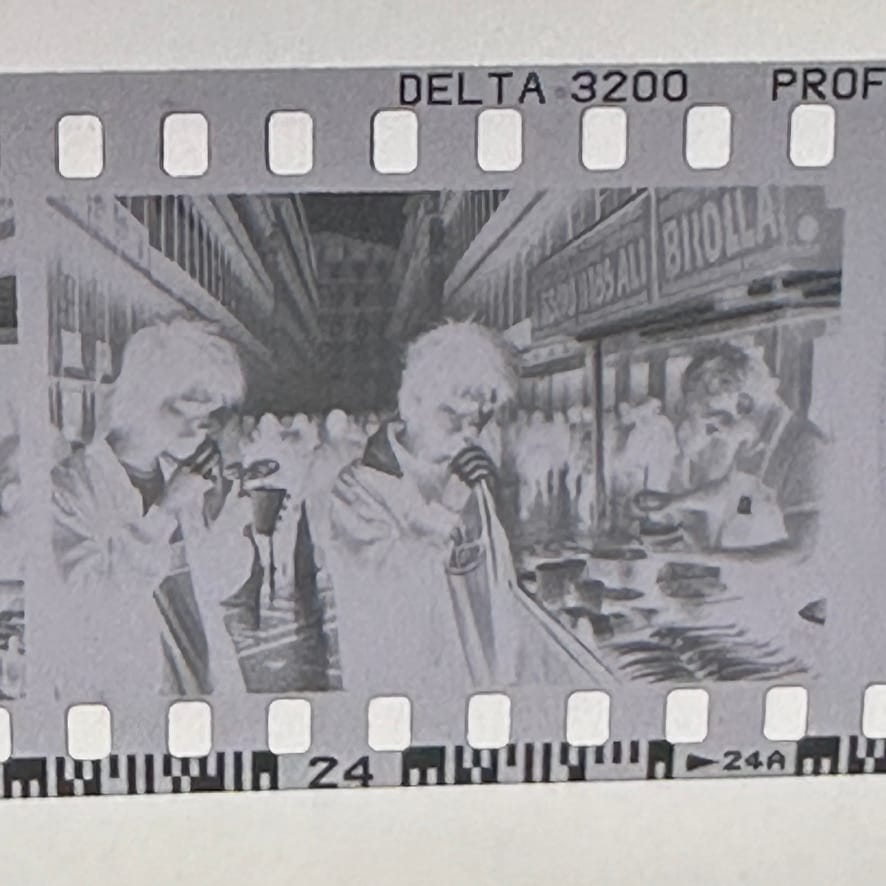

Now we face a dilemma. Either these images are inauthentic—and it turns out there is nothing special about film after all—or the images are authentic—and it turns out that authenticity is actually a claim about the equipment and process and not at all about the actual image itself. Neither outcome is good.
In the absolute worst case, if we accept that film is the gold standard of authenticity, that if we want to know if an image is unaltered, that it represents something that really happened (whatever that means), then we will be easily duped. Because our standards are all wrong.
In the best case, the notion of authenticity isn’t actually doing any work. And it’s that path I want to explore.
A red herring
I don’t think there is a way to get the standards of authenticity right. I think the dilemma above makes it clear that we have to reject this kind of litmus test for a photo, because I think that authenticity is a red herring, a hipster dog-whistle for evaluating whether we approve of an image or not. For various reasons, we approve more of images that weren’t fabricated by way of electronic brains, that create a connection with the artist and with the subject, and approve less of images that were generated by large language models.
But the concept of authenticity is a poor guide to this kind of approval. It’s too closely tied to things that simply don’t matter. Authenticity as a concept is a trap. It’s a distraction. I don’t think that particular processes or physicality are especially relevant.
On the other hand, I do think that we are being gas-lit into believing that AI is the future. AI’s unquenchable thirst for both energy and the creative output of actual humans is both acceptable and inevitable is a fucking problem we need to confront sooner rather than later. But to talk about AI only in terms of “inauthenticity” is to skirt around much more difficult ideas to wrangle with, it’s a kind of intellectual escapism masquerading as cultural and artistic critique.
Instead of debating whether and how AI-generated images or analog photos are more or less “authentic”, let’s instead get mad that creating these images created too much CO2, cost too much electricity, and exploited the unacknowledged labor of creative people as training data.
But also: Let’s celebrate the sheer joy of running into a drunken crowd, camera in hand, and snapping away using whatever technology is handy and sharing those images with friends. Let’s encourage people to follow their artistic urges wherever they take them, and to push themselves creatively. I think that’s more productive and more fun than debating abstract concepts.
I think we ended up here because the ethical questions around AI are really difficult to wrangle with, because one side of the argument has very large sums of money incentivizing their decisions, because confronting these questions makes us feel small and powerless, and because we are frightened of a future that suddenly looks a lot more bleak for creatives than we expected. So we fall back on easy (if meaningless) questions, we debate what degree of manipulation is acceptable, we argue about abstract notions of causal connection and physicality (hint: digital images also have a physical existence in the form of configurations of electrons in specialized lattices…).
Instead, let’s get angry. And let’s work to find ways to demonstrate that humans will always be more valuable than machines and profits.
I would really like to encourage you to read the linked essays in full, because despite my cherry-picking they all have some interesting and nuanced things to say about the relationship between analog photography and AI-generated imagery that doesn’t depend on notions of authenticity. The role of a human creator and the emotional connection to a scene obviously play an important role in the power of a photograph. In addition, Lomography published a very thoughtful essay on the relationship between AI generated images and analog photography that you should read.
Support this blog
If you enjoy reading this blog, I encourage you to consider purchasing a book or print to show your support. And if you're into analog photography, check out my new mobile app Crown + Flint.
